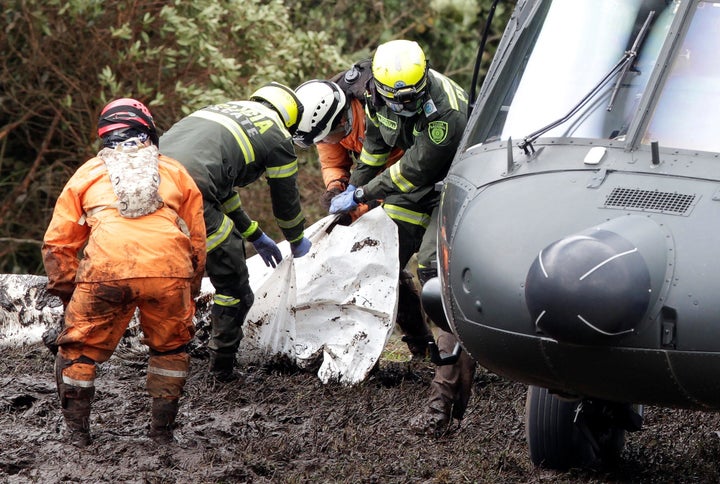The final, desperate words of the pilot of a plane that crashed in Colombia carrying the top Brazilian football team Chapecoense have been revealed.
Miguel Alejandro Quiroga Murakami can be heard requesting permission to land because of “fuel problems”, as an air traffic controller explains another plane was already approaching the runway at Medellin airport and he would have to wait seven minutes.
The pilot had not formally declared an emergency at this point. As the plane circled in a holding pattern, he can be heard growing more desperate. “Complete electrical failure, without fuel,” he said in the tense final moments before the plane set off on a four-minute death spiral.
By then the controller had gauged the seriousness of the situation and told the other plane to abandon its approach to make way for the charter jet.
But it was too late.
Just before going silent, the pilot said he was flying at an altitude of 9,000 feet and made a final plea to land: “Vectors, senorita. Landing vectors.” The British-built BAe 146 jet slammed into a muddy mountainside just miles from the airport.
All but three members of the Chapecoense football team were killed in the crash which claimed 71 lives. Two crew members and a journalist also survived.

Juan Sebastian Upegui, the co-pilot on a nearby Avianca plane said he was within range to tune into the plane’s radio signal and overheard the pilot telling the controller he was in trouble.
“Mayday mayday… Help us get to the runway… Help, help... We’re going down!” he described the pilot as screaming in a leaked audio message played by local media.
“I remember I was pulling really hard for them, saying ‘Make it, make it, make it, make it,’” Upeqgui says in the recording. “Then it stopped. ... The controller’s voice starts to break up and she sounds really sad. We’re in the plane and start to cry.”

Alfredo Bocanegra, head of Colombia’s aviation agency, said that while evidence initially pointed to an electrical problem, the possibility the crash was caused by lack of fuel has not been ruled out. Planes need to have enough extra fuel on board to fly at least 30 to 45 minutes to another airport in the case of an emergency, and rarely fly in a straight line because of turbulence or other reasons.
Before being taken offline, the website of LaMia, the Bolivian-based charter company, said the British Aerospace 146 Avro RJ85 jetliner’s maximum range was 2,965 kilometers (1,600 nautical miles) — just under the distance between Medellin and Santa Cruz, Bolivia, where the flight originated carrying close to its full passenger capacity.

“If this is confirmed by the investigators it would be very painful because it stems from negligence,” Bocanegra told Caracol Radio on Wednesday when asked whether the plane should not have attempted such a long haul.
One key piece to unlocking the mystery could come from Ximena Sanchez, a Bolivian flight attendant who survived the crash and told rescuers the plane had run out of fuel moments before the crash. Investigators were expected to interview her on Wednesday at the clinic near Medellin where she is recovering.
“’We ran out of fuel. The airplane turned off,’” rescuer Arquimedes Mejia quoted Sanchez as saying as he pulled her from the wreckage. “That was the only thing she told me,” he told The Associated Press.
No traces of fuel have been found at the crash site and the plane did not explode on impact, one of the reasons there were six survivors.
However, there could be other explanations for that: The pilot may have intentionally dumped fuel in the hopes of reducing the risk of a fireball in a crash, or the aircraft could have suffered a fuel leak or other unexplained reason for losing fuel.
John Cox, a retired airline pilot and CEO of Florida-based Safety Operating Systems, said the aircraft’s amount of fuel deserves a careful look.
“The airplane was being flight-planned right to its maximum. Right there it says that even if everything goes well they are not going to have a large amount of fuel when they arrive,” said Cox. “I don’t understand how they could do the flight nonstop with the fuel requirements that the regulations stipulate.”
